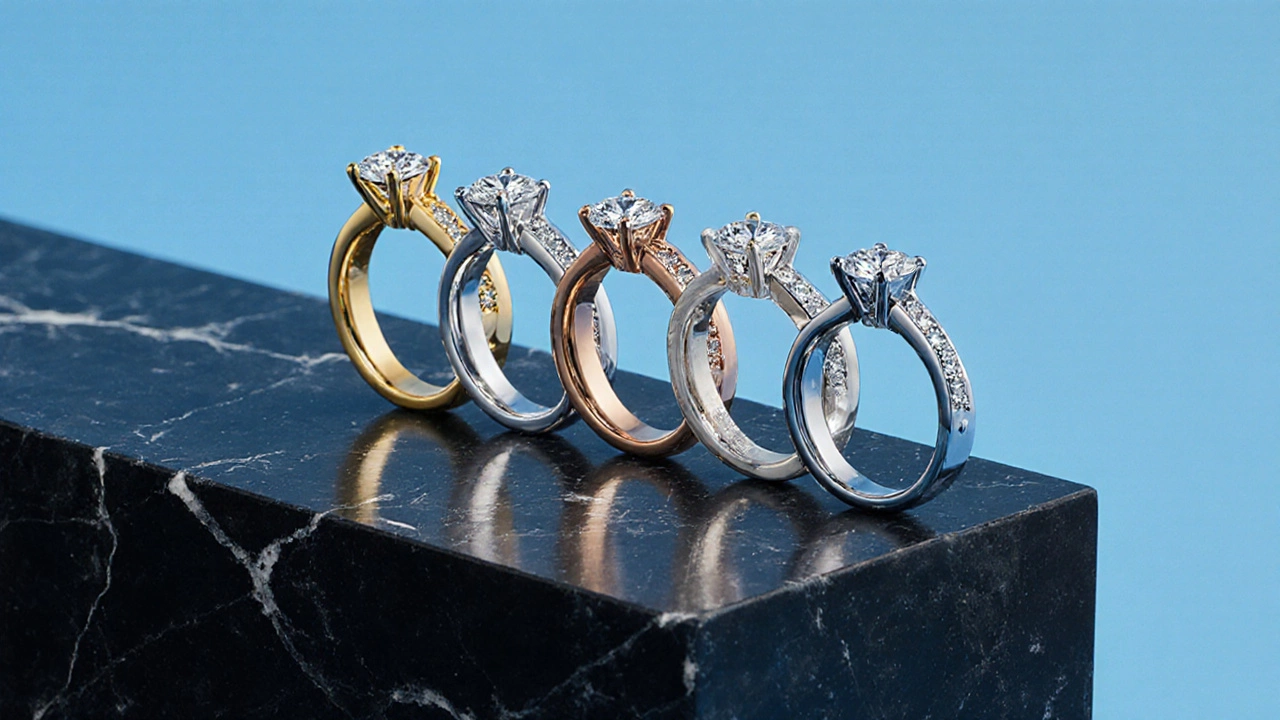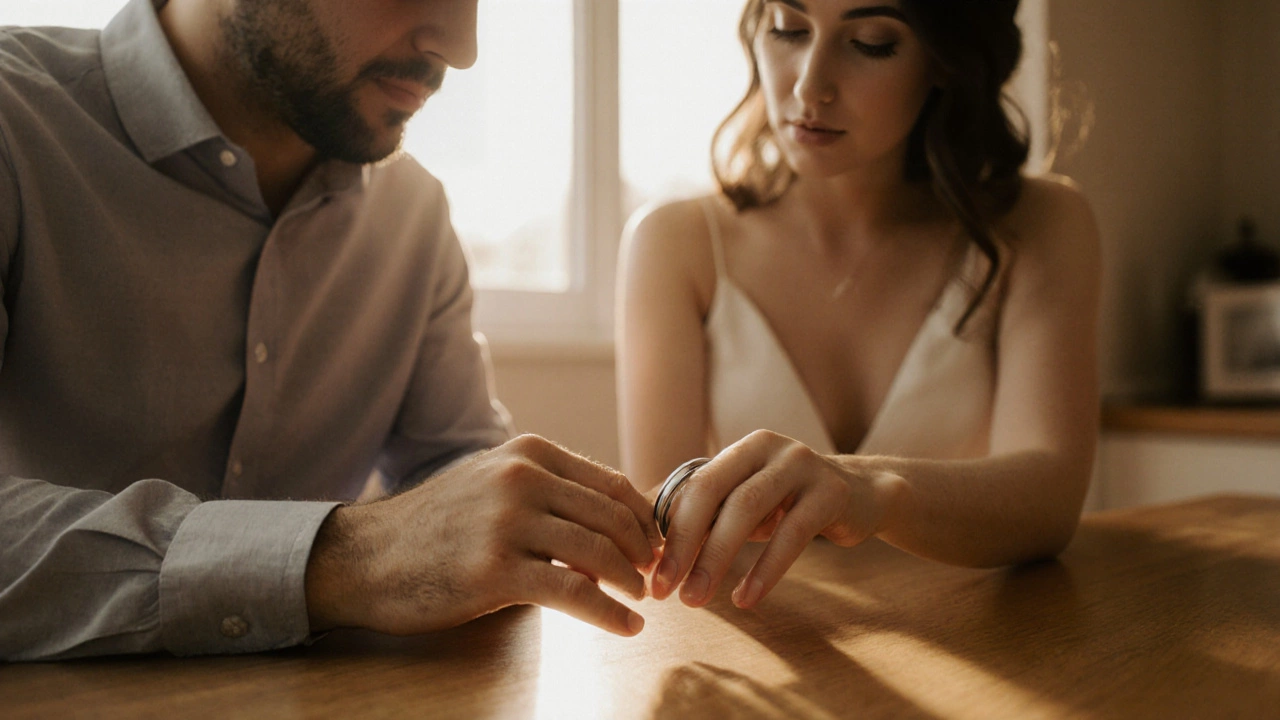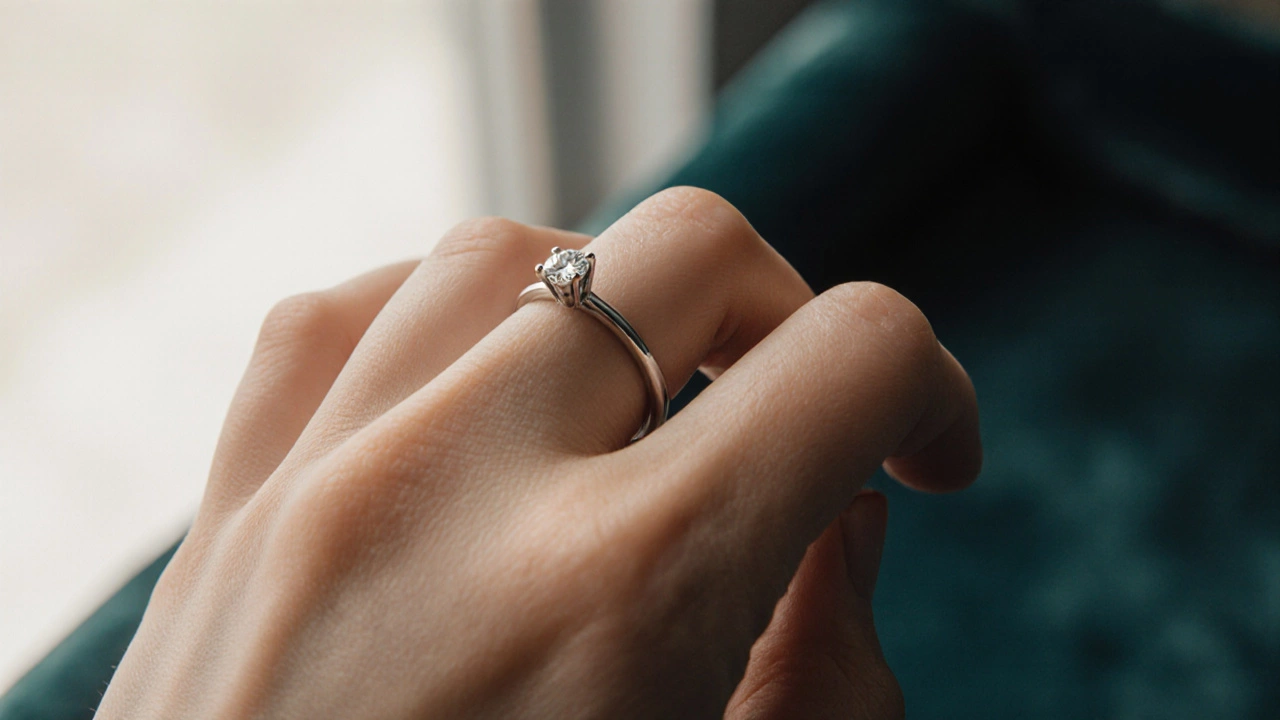Wedding Ring Carat Calculator
Tip:
Consider that 20-30% of your total budget should go toward the diamond. A well-cut 0.30ct stone often looks better than a poorly cut 0.50ct stone.
When you start talking about the perfect wedding ring, the first number that pops up is often the carat weight. But what does that number really mean for you and your partner? Below you’ll find a step‑by‑step guide that translates the jargon into plain decisions you can make today.
Key Takeaways
- For most couples, a 0.25‑0.50carat diamond fits a traditional wedding band without breaking the bank.
- Choose carat based on budget, lifestyle, and the metal setting you love.
- Consider the 4Cs (cut, color, clarity, carat) together - a smaller, well‑cut stone often looks better than a larger, lower‑quality one.
- Get a reputable certification (GIA, IGI) to confirm the stone’s true weight.
- Ask for a try‑on and see the stone in different lighting before you commit.
What Is a Carat and Why Does It Matter?
In the jewelry world a carat is a unit of weight equal to 0.2grams. It does not describe the stone’s size directly - two diamonds of the same carat can look different if one is cut better.
The diamond a crystalline form of carbon prized for its brilliance is the most common gemstone in wedding rings, so when we talk about "carat" we’re usually referring to the diamond’s weight.
Understanding carat helps you balance three things: visual impact, cost, and comfort. A heavier stone is more noticeable, but it also raises the price sharply - the price curve isn’t linear, it’s exponential.
Typical Carat Ranges for Wedding Bands
Unlike engagement rings, which often showcase a single statement stone, wedding bands usually feature a slimmer profile. Here’s a quick reference:
- 0.10‑0.20carat: Tiny accent stones, perfect for a subtle sparkle.
- 0.25‑0.50carat: The sweet spot for most couples - noticeable but still modest in price.
- 0.75‑1.00carat: A more pronounced look, suitable if the ring is the primary daily accessory.
- 1.25carat and up: Luxury tier, usually paired with a high‑budget and a setting that maximizes light.
These ranges assume a standard setting the metal framework that holds the stone like a bezel or prong set in 14K or 18K gold, platinum, or palladium.

Factors That Influence the Right Carat Choice
Choosing a carat isn’t just about the number on the price tag. Consider the following variables:
- Budget: Decide how much of your total ring budget you’re willing to allocate to the stone. A common rule of thumb is 20‑30% of the total cost for the diamond.
- Lifestyle: If you work with your hands a lot, a lower‑carat stone set low in the band reduces the risk of snagging.
- Metal Type: Platinum adds weight and a slightly higher cost, while 14K gold offers a lighter feel for the same carat.
- Setting Style: A bezel setting can make a smaller stone look larger, while a high prong setting showcases sparkle.
- Partner Preference: Some couples want the wedding band to match the engagement ring’s sparkle; others prefer a subtle complement.
Balancing these factors often leads couples to pick a carat that feels right visually and financially.
Budget Planning: Cost vs Carat
Below is a rough cost guide for a round brilliant diamond set in 14K white gold (prices can vary by region and market conditions, but this gives a baseline for 2025):
| Carat | Price Range | Typical Visual Size |
|---|---|---|
| 0.10ct | $300‑$600 | Very small, best as accent |
| 0.25ct | $800‑$1,500 | Noticeable, fits most bands |
| 0.50ct | $2,200‑$3,800 | Clear presence, still modest |
| 0.75ct | $4,500‑$7,200 | Statement size, brighter sparkle |
| 1.00ct | $7,500‑$12,000 | Luxury tier, high visual impact |
Notice how the jump from 0.25ct to 0.50ct more than doubles the price. That’s why many couples settle on the 0.25‑0.50ct window - you get a clear sparkle without blowing the budget.
Practical Tips for Selecting the Perfect Carat
- Start with the 4Cs: Choose a good cut first; a well‑cut 0.30ct can outshine a poorly cut 0.50ct.
- Use a size simulator: Many jewelers have an online tool that lets you compare how different carats look side by side.
- Check certification: Look for a GIA Gemological Institute of America, an industry‑standard lab or IGI report to confirm the exact carat weight.
- Consider a halo: A halo of tiny stones around a smaller center stone can create the illusion of a larger carat.
- Try before you buy: Wear the ring for a day or two; see how it feels during daily activities.

Common Mistakes to Avoid
Even seasoned shoppers slip up. Here are the pitfalls you should watch for:
- Focusing only on carat and ignoring cut - a dull stone defeats the purpose.
- Choosing a carat that exceeds the band’s design capacity, leading to a weak setting.
- Skipping certification; uncertified stones can be mis‑weighted.
- Buying on impulse without budgeting for the setting and metal.
- Neglecting lifestyle - a high‑carat stone in a thin band can snag easily.
Putting It All Together: Your Decision Framework
Use this quick decision tree to land on a carat that feels right:
- Set your total ring budget.
- Allocate 20‑30% of that budget to the diamond.
- Check the price table to see which carat fits that allocation.
- Choose a cut rating of at least Very Good (VG) or Ideal (I).
- Pick a metal that complements your lifestyle (platinum for durability, gold for lighter feel).
- Ask for certification and verify the carat weight.
- Try the ring on and make sure it feels comfortable.
Follow these steps and you’ll end up with a wedding band that looks stunning, stays within budget, and won’t give you headaches down the road.
Frequently Asked Questions
What is the smallest carat size that is still visible?
A 0.10carat stone can be seen easily in a well‑cut setting, especially when surrounded by other diamonds or set in a halo.
Does a higher carat always mean a better-looking ring?
Not necessarily. A poorly cut larger stone can look dull, while a smaller stone with excellent cut, color, and clarity can sparkle more.
Can I mix metals and still keep a low carat weight?
Yes. Two‑tone bands (e.g., white gold with yellow gold accents) can draw attention away from the stone, letting you stay under 0.30ct while looking bold.
Should I get a ring with a certification?
Absolutely. A GIA or IGI report guarantees the stated carat weight and protects you from misrepresentation.
How does the setting affect the perceived carat size?
A bezel setting can make a stone appear larger because it hides the edges, while an open prong setting lets more light in, emphasizing sparkle.

